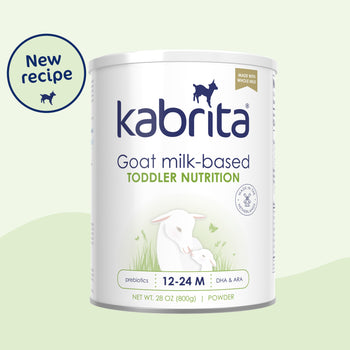
Food Sensitivity 101: What Your Child’s Poop Can Tell You
Your child’s poop is an indicator of health. And, you may be surprised to learn, it has a lot to say! It can tell you whether they are eating enough fiber, adequately hydrated, digesting food optimally, or even experiencing food sensitivity. Each child is different, but here are some features of poop to keep an eye on – and what clues they can provide about your little one’s digestive health.
Poop will vary, from child to child, and day to day (depending on what is eaten). However, there are several common components – poop is made up of water, bacteria, undigested food and fiber, small amounts of fat, inorganic matter, small amounts of mucous, mineral salts (ash), and some other proteins. To put it simply, poop is what’s left over once the food has passed through the digestive system, where nutrients and water are absorbed.
By keeping track of changes in the properties of poop, such as frequency, shape, texture, and consistency, you can gain insight into your child’s digestive health. Here’s what we suggest parents pay attention to – and some simple ways to promote good digestive health for your child.
Shape and Consistency
Developed by researchers to assess poop quality. The Bristol Stool Chart is a visual guide that is divided into 7 categories.
For children who are eating solids, this chart provides one way to identify potential digestive troubles. Ideally, stools should resemble Type 3, 4, and 5. Type 1 and 2 suggest constipation and Type 6 and 7 indicate diarrhea – both of which may be associated with food sensitivity.

In addition to assessing the quality of your child’s poop with the Bristol Stool Chart, there are some other stool features that you’ll want to keep an eye out for that may reflect underlying food sensitivity, such as:
Poop That Floats
Food sensitivity can contribute to irritation and inflammation in the intestines and may affect nutrient absorption. Poop that frequently floats in the toilet, rather than sinks, may be associated with poor absorption of nutrients, especially fat. This may also be accompanied by a greasy, oil slick appearance along the top of the toilet water.
Excess Mucus
While mucus may appear in small amounts in poop, a consistent increase may not be normal, especially if it is accompanied by other changes in bowel habits, abdominal pain, or blood. Excessive mucus may be associated with teething or an infection, but it can also possibly be related to food sensitivity.
Blood
This may reflect a local concern, for example, hemorrhoid or fissure. It could also possibly be associated with constipation and straining (which may be how food sensitivity is expressed in some children), or it may be indicative of a more serious underlying condition such as a Cow Milk Protein Allergy (CMPA). This is not the same as cow milk sensitivity (CMS), so it’s important to understand the difference between the two. It’s best to check with your healthcare provider if you’re not sure.
Transit Time
Transit time, or how long it takes for food to travel through the digestive tract is a strong indicator of digestive health. It can be affected by a variety of factors, including stress and anxiety, fluid intake, diet, and food sensitivities.
A delayed or slowed transit time results in fewer bowel movements over several days and may be associated with constipation. An increased transit time (especially when the frequency of poop is 1.5 or 2 times your child’s usual pattern) may be associated with diarrhea.
Abdominal Pain and Tenderness
Your child's belly should generally be soft to the touch and painless on gentle palpation. Even if your child is pooping, a distended stomach and tummy aches could be a signal that they aren't entirely emptying their bowels.
Undigested Food
Sometimes, you may occasionally see some undigested food in your child’s poop – this is most commonly associated with foods with high amounts of insoluble fiber (like corn). Consistently seeing undigested food in your child’s poop may also reflect an excessively short transit time that is accompanied by malabsorption, which could be a sign of cow milk sensitivity. You’ll want to see your healthcare provider if there is persistent diarrhea or weight loss.
How You Can Promote Healthy Digestion
No parent likes to see their little ones suffer from uncomfortable tummy symptoms. Determining the cause of tummy troubles in toddlers may require careful evaluation, so it’s essential to work with a health professional to rule out an organic cause. However, significant changes may warrant taking a look at diet and the possibility of food sensitivity.
A useful starting point to see a potential relationship between foods and symptoms is to keep a 7-day diet diary (keep in mind that it may take a few days to develop symptoms related to a food trigger). Since goat milk proteins form a gentler curd in the tummy and are degraded faster than cow milk protein, goat milk may be an option for children with minor issues associated with cow milk sensitivity*.
By keeping an eye on the relationship between the food children eat and the poop that comes out, parents can better influence their children’s digestive health and happiness.
Kabrita Goat Milk Toddler Nutrition may be an option for little ones during feeding transitions, such as weaning and supplementing, or those with minor issues associated with cow milk sensitivity*.
*Not suitable for children with confirmed cow milk protein allergy








